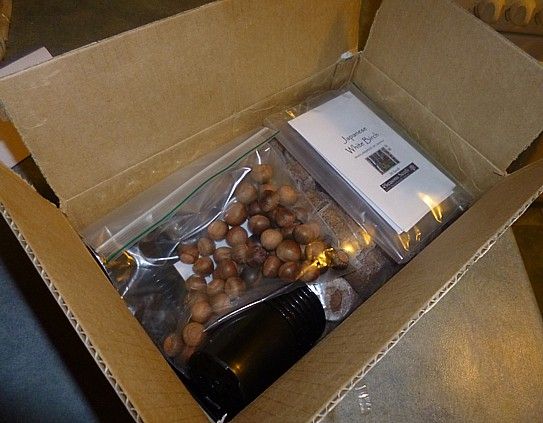All About Acorns
I placed my first order with 4 Seasons Seeds recently. There are a large range of seeds on offer, from interesting vegetable varieties to ornamentals, but I was most interested in the 'Trees and Shrubs' section. I spent such a long time perusing the website that in the end I ran out of time and made my order in a hurry. I accidentally ordered Pin Oak instead of Trident Maple. I was saving Pin Oak for a later time as the process of sowing them involves stratification, which sounded a bit too advanced for a noob like me. When the parcel arrived and I saw acorns in it, I didn't know what to think! But I'm embracing it as a chance to learn.

I have to apologise in advance because the photos in this post aren't very aesthetically pleasing (though pictures of peat moss might appeal to some!).

The parcel from 4 Seasons Seeds arrived very fast and was well-packed. The other seeds I ordered were Japanese Birch and False Spirea (also accidental!). The owners had kindly added a free packet of Hungarian Lilac. I also ordered some peat moss pellets and small plastic pots for my propagation operation.

So what is stratification? Thankfully there was a cheatsheet included that explains everything. Because oaks grow in cold climates, they are used to a period of snow and freezing every year. In autumn, the acorns drop to the ground and lie under the snow until spring. In fact, the acorns will not sprout unless they go through this period of cold first. To make the acorns sprout in warmer climates, or out of the proper season, the grower needs to put them in the fridge for at least 30 days, and anywhere up to 90 days. I envisaged our whole fridge filled with little pots of dirt! Thankfully though, the cheatsheet said that all I needed to do was put them in ziplock bags with some moistened peat and put them in the crisper section.

I started out by soaking the peat moss cocoons in water until they were nice and moist and plump. Then I 'planted' an acorn in each one, pushed it down inside and squeezed the top shut.

I put 6 cocoons in each plastic bag. Halfway through, it occurred to me that treating them this way might make it very difficult to check if the acorns were germinating or not. So I switched to a different method. I peeled the mesh covering off about 5 peat moss discs and put them in a plastic bag with some water. Then I worked at them with my hands until they were wet all the way through. I put 6 acorns in each bag and squished away until they were well covered with peat moss. It occurred to me at some point that with this method it might be just as difficult to tell if the acorns have germinated, but experimenting is always fun.

Once I'd done 4 bags that way, I realised that all-up, there were 55 acorns in the 20-acorn bag that I'd purchased. Even assuming that one in two acorns won't germinate, that's a generous amount. After peating up 48 though, I was a bit over it and decided to save the rest for craft supplies.

Then into the fridge the baggies went. Now it's just an (im)patient wait to see what happens!
The desired result:
